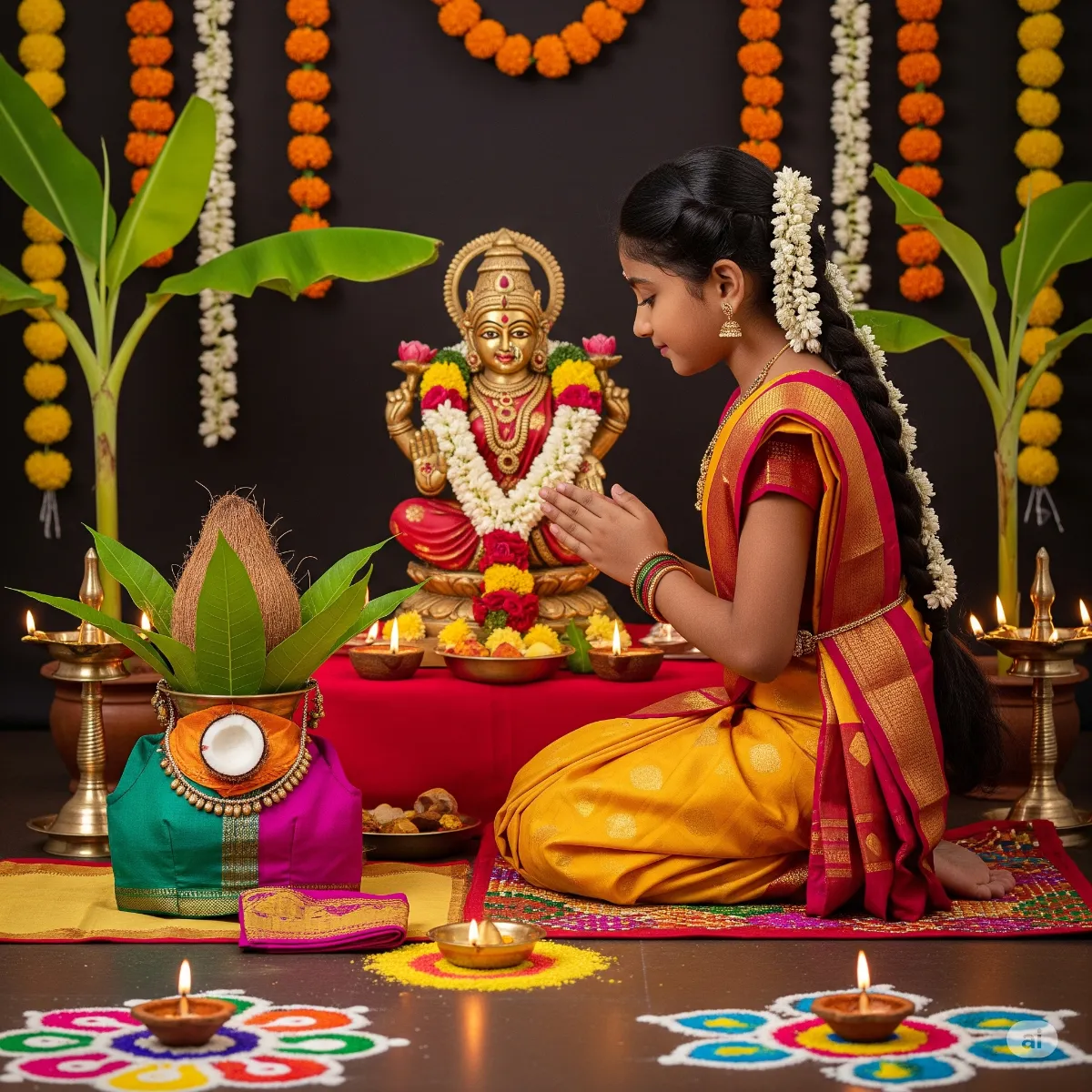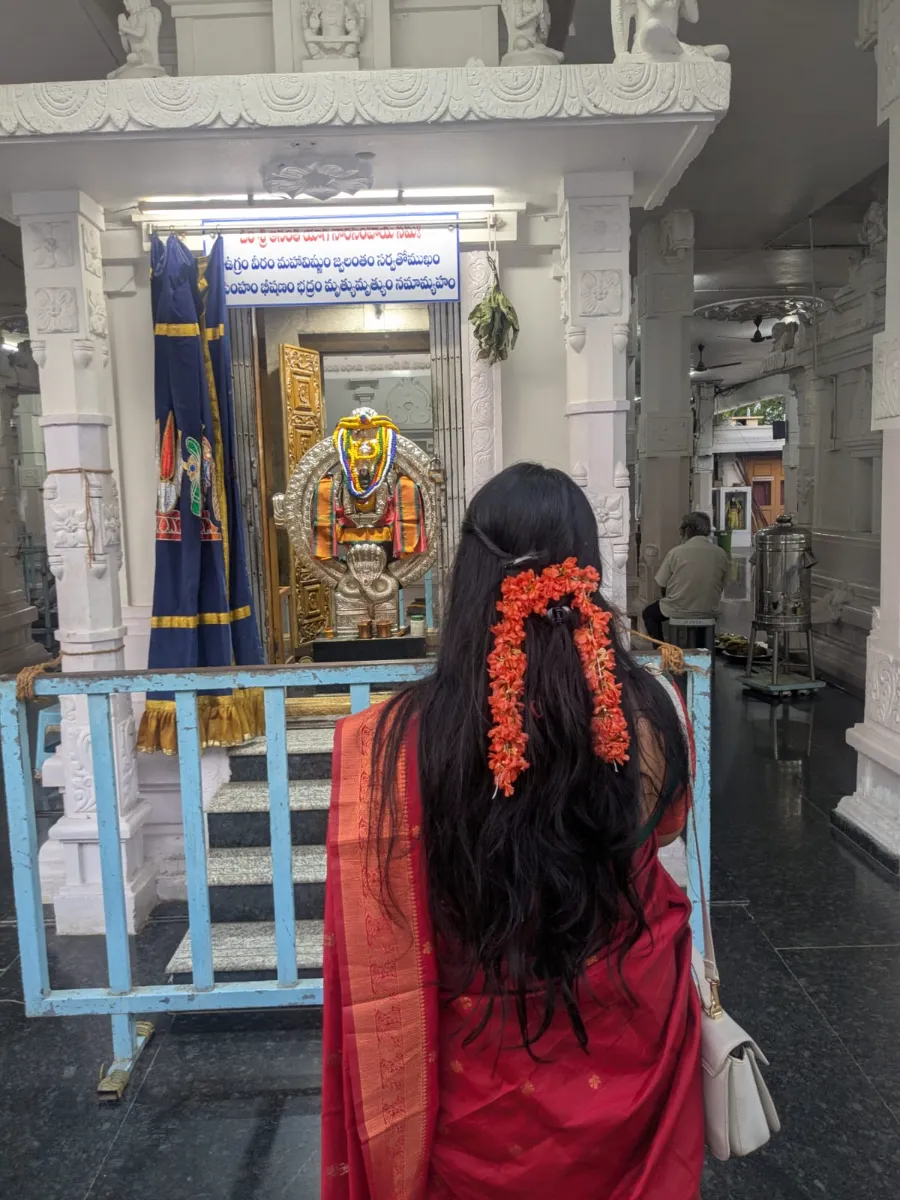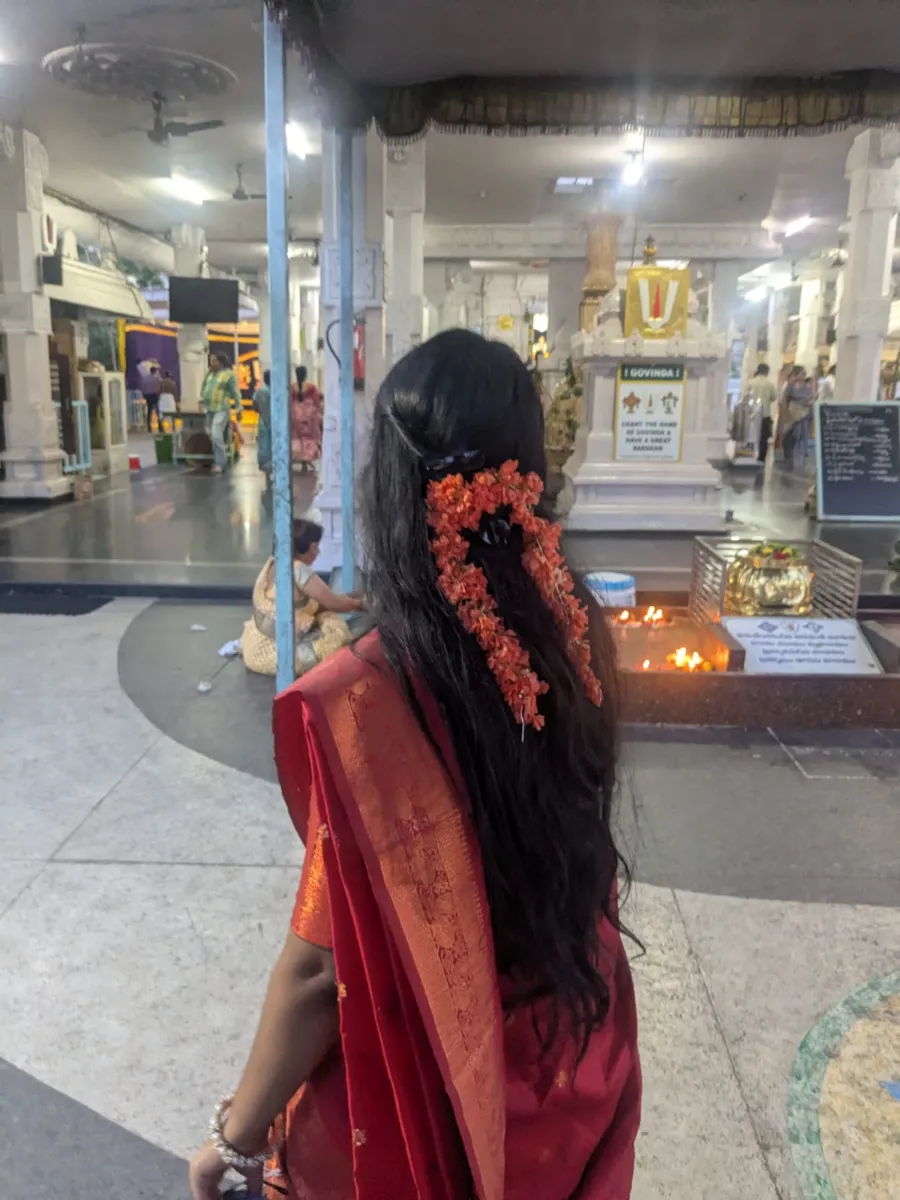The Divine Importance of Varalakshmi Vratam

Varalakshmi Vratam, a sacred Hindu festival, is celebrated on the Friday before the full moon in the month of Shravana, which is particularly dear to Goddess Lakshmi. The vratam is dedicated to Goddess Varalakshmi, a form of Goddess Lakshmi who grants eight types of wealth (Ashta Lakshmis). By performing this vratam, devotees seek blessings for prosperity, health, and well-being for their families.
The Divine Origin of the Vratam
The vratam's origin lies in a conversation between Lord Shiva and Goddess Parvathi. When Parvathi asked Shiva about a vratam that bestows prosperity, he revealed the power of Varalakshmi Vratam. He described it as a supreme vratam for women to secure wealth, good fortune, and a long, harmonious married life.
The Legend of Charumathi
The Puranas tell the story of a devout, poor woman named Charumathi. Goddess Varalakshmi appeared to her in a dream and instructed her to perform the vratam. Charumathi's unwavering faith and sincere devotion pleased the goddess, who blessed her with immense prosperity. Her story became an inspiration, showing others the power of the vratam.
The Significance of the Name 'Varalakshmi'
The name 'Varalakshmi' is derived from two Sanskrit words: 'Vara,' meaning boon, and 'Lakshmi,' the Goddess of Wealth. The vratam is not just about material wealth; the term 'Vara' signifies a request for much more, including:
- Health
- Peace
- A long married life
- Children
- Prosperity
- Strength
By observing the vratam, devotees pray for these eight types of prosperity, not just for themselves but for their entire family.
The Ritual of the Kalasha
One of the most important aspects of the vratam is the preparation of the Kalasha, which serves as the physical representation of Goddess Lakshmi. Every Kalasha begins with a Peeta, or base. Here's a step-by-step guide to its preparation:
- Purifying the Space: First, a few betel leaves are placed on the Peeta to purify the space.
- Creating the Foundation: A bed of rice is then placed on the leaves, symbolizing abundance and the foundation of life. The Kalasha is then placed on top of the rice.
- Inviting Life and Energy: Inside the Kalasha, water is added to invite life-giving energy, followed by a coin for wealth, a pinch of turmeric for purity, and kumkum for divine energy.
- Adorning the Goddess: Turmeric and betel leaves are tied to the neck of the Kalasha to represent the form of Goddess Lakshmi. Five mango leaves are placed around the neck, representing the five elements of nature.
- Final Adornment: A coconut, smeared with turmeric, is placed on top of the Kalasha. Finally, a new blouse piece is elegantly draped around the pot, dressing the goddess herself.
Why is Varalakshmi Vratam so Important?
The importance of Varalakshmi Vratam is multifaceted, encompassing spiritual, social, and personal aspects:
- A Path to Prosperity and Well-being: The primary reason for observing this vratam is to seek the blessings of Goddess Varalakshmi for wealth, health, and a prosperous life. It is believed that performing the puja with a pure heart can alleviate financial struggles and bring stability.
- Marital Harmony and Longevity: This festival is primarily celebrated by married women, or 'Sumangalis.' It is believed that by performing the vratam, a woman can secure a long and prosperous life for her husband, as well as ensure the well-being of her children and family. The puja strengthens marital bonds and brings peace and happiness to the home.
- Spiritual Cleansing and Devotion: The vratam involves a day of fasting and sincere prayers. This act of self-discipline and devotion is a form of spiritual cleansing, helping individuals to purify their minds and connect with the divine. It is a time for introspection and gratitude.
- A Symbol of Feminine Power: Varalakshmi Vratam is a celebration of feminine power and grace. It highlights the central role of women in the family as custodians of prosperity and well-being. The rituals performed by women symbolize their ability to bring peace and abundance into their homes.
- Community and Social Bonding: The festival is a time for families and communities to come together. Homes are beautifully decorated, and neighbors, friends, and relatives are invited to share in the puja and blessings. This fosters a sense of community, shared faith, and mutual goodwill.
On the day of Varalakshmi Vratam, homes are cleaned and decorated. Women wake up early, take a holy bath, and adorn themselves in new, traditional attire. An elaborate puja is performed after all the lighting of lamps, chants and prayers.
In essence, Varalakshmi Vratam is more than just a ritual; it is a profound expression of faith, love, and hope. It is a day when devotees, particularly women, connect with the divine mother to seek her blessings for a life filled with happiness, prosperity, and peace.
Gallery



Rate this Article
About the Author
Kavya Sree Danasi
Author at Her Insights
.jpg?alt=media&token=7ca684ab-30ee-4756-8fe9-7cee76709d58)

